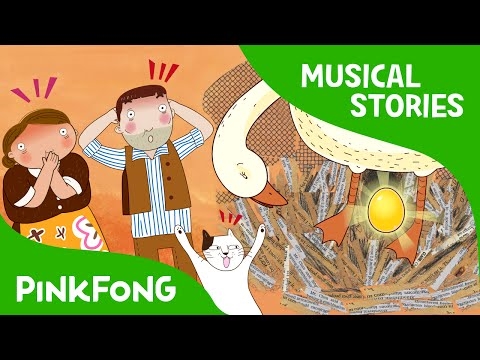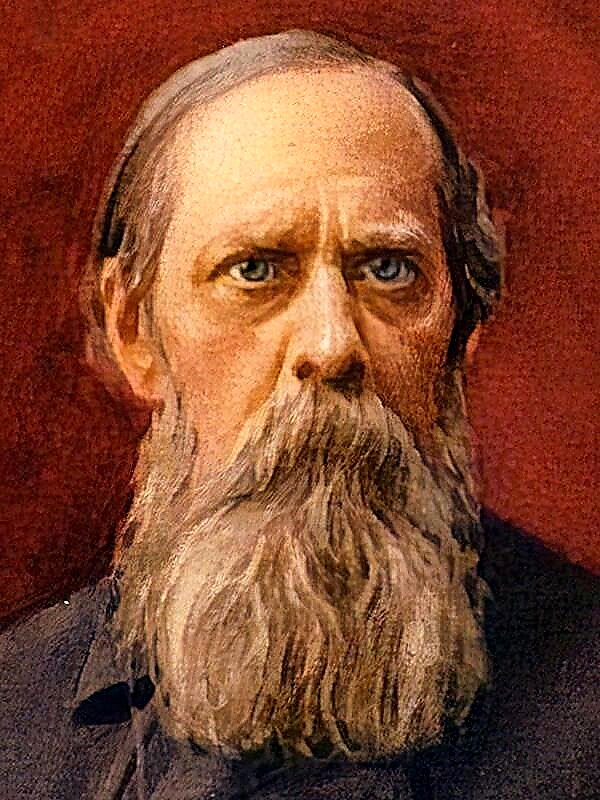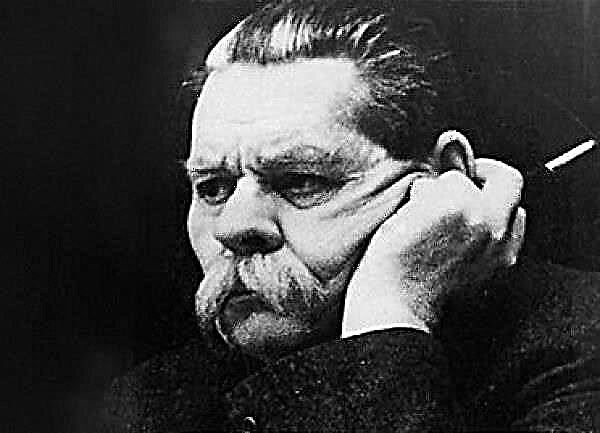Help the reader - structure your thoughts in the shape of a pyramid
In preparing the document, many represent its future content, but do not have a concrete plan - what to say and how to formulate it. They just start writing, hoping that the structure will emerge on its own. The result is an erratic narrative that the reader will have to understand.
Reason prefers order. He even arranges random data in a certain order.
Example. The ancient Greeks saw in the star clusters figures of animals, rather than promiscuous points.
While reading, a person automatically tries to arrange information in the form of a pyramid, the foundation of which is justifications and arguments confirming the conclusions. In this form, the reader is easier to "digest" the information.
Example. “The seats were cold. I almost got into a fight. Italy lost. It was a really terrible football match. ” Such a “story” is very poorly structured, since the key idea is indicated only at the end.
According to the structure of the pyramid, a generalization is first introduced, and then argumentation is given. The above story is easier to understand if you structure it differently.
Example. “It was a really terrible football match: cold seats, I almost got into a fight, and Italy lost.”
Group similar ideas and then express each group in one sentence
When constructing a pyramid, use the bottom-up approach: first list all the theses, grouping those that lead to the same conclusion. Then express each group in one sentence. Each such generalization is the top of the pyramid.
Repeat the procedure for the remaining groups. As a result, the main idea of the entire document will be expressed in one sentence. Your pyramid is ready.
Example. The theses “our customer base is growing”, “each customer buys more” and “we increased our prices” can be expressed in one sentence: “our sales are growing”. Then you can group this generalization with others, for example, with “our fixed costs are reduced” and “our variable costs are reduced”, and express this new group with a general sentence: “our incomes are growing”.
Grouping and summarizing is simple, but you need to adhere to the basic rules:
- Any thought expressed in a pyramid should be a brief description of grouped theses. Never use meaningless generalizations such as "there are three reasons for entering the Austrian market." This is an extra scribble, since the author did not bother to generalize three reasons for the reader.
- Abstracts in any group should be logically similar and at the same level of abstraction. That is, a group cannot consist of “apples”, “fruits” and “table”: the apple and the table are logically not similar, and “fruit” is an abstract term referring to a higher level of the pyramid.
Rationale: Draw conclusions from the data chain using deduction
Any generalization in the pyramid should raise a question from the reader, the answer to which is given later. The answer is formulated by the method of deduction.
Deduction is a process of reasoning in which conclusions are drawn from assumptions.
Example. From the assumptions "all people are mortal" and "Goliath is a man," it follows that "Goliath is mortal." Then you can summarize the whole process of deductive reasoning: "Goliath is a man, he is mortal."
For recommendations, use the reverse deduction order.
Example. “We have to hire a candidate who can read. Candidate A can read. Therefore, we must hire candidate A. ” So the assumption-assumption-conclusion order conceals the main information to the end.Recommendations usually benefit from the reverse order: “We must hire candidate A, because we need someone who can read, but he can.”
Despite the fact that deductive reasoning is a straightforward and natural process, it should not be used in complex reasoning, where several levels of justification are needed to confirm the assumptions.
If you try to justify the conclusion of a complex document through deduction, the first assumption is likely to have several levels of justification through which the reader will have to “get through” to approach the second assumption. This logic is very difficult to follow.
Justification: draw conclusions from a group of similar theses by induction
If the generalization in the pyramid cannot be confirmed by deduction, use a more creative form of reasoning - induction. Induction draws a conclusion from a set of ideas, in a sense, similar.
Example. The conclusion “Einstein was a genius” is confirmed by such generalizations as “studied the theory of relativity”, “studied gravity” and “studied the cosmological constant”.
In induction, the logical order of arguments is not as obvious as in deduction. To make the idea intuitive to the reader, the order should be determined by the basis of the grouping. If you have grouped parts of the whole, for example, company divisions, arrange them based on their structure, similar to the structure of the organization.
Use the MECE principle (the principle of mutually exclusive, jointly exhaustive provisions). That is, the company’s divisions will not duplicate functions in several divisions, but at the same time, the parts combined together will describe the organization without losing anything.
If the grouping consists of recommendations, arrange them in chronological order, starting with the first.
Example. When summarizing “Hire a new assistant,” the order of grouping: “Place a vacancy, invite candidates for an interview, make a decision on hiring.”
If you have classified elements based on certain common characteristics, arrange them according to the level of characteristic in each element.
To formulate recommendations, approach the problem from a systematic point of view and visualize it using logical trees
Business documents often provide recommendations for resolving a problem. Use the straightforward problem-solving process to make recommendations.
1. Identify the problem in clear, measurable terms.
Example. “The factory loses three hours of working time every day; how can this be avoided? ”
2. Find out exactly what the problem is.
Example. “The problem is not in people or raw materials, but in equipment: it breaks down every day.”
3. Dig deeper - find out why the problem exists.
Example. “The attendants are not properly trained.” This allows you to identify actions to solve the problem. For example, “Designate Responsible Teachers or Invite External Teachers.”
To solve a problem, you can visualize it using a logical tree. A logical tree is a simplified diagram of connections branching from left to right.
Example. Profit tree: the word “Profit” forms a tree trunk and is divided into two branches: “Sales” and “Costs”. "Expenses" branch out into "Constant" and "Variables"
In the end, the tree will be so detailed that the problems and their sources will become apparent. In this example, you can understand that profits are reduced due to rising costs for certain materials.
Structure recommendations based on the result you can achieve
You have found a solution to the reader’s problem. Now you need to convince him to take action. Make recommendations as convincingly as possible.
Giving a recommendation, you make a proposal for action aimed at achieving the desired result.Group actions based on the result you are striving to achieve, and describe it so that you can later understand whether it has been achieved.
Example. The reader wants to increase their profits.
Poorly structured recommendations look like this:
1. Study indicators:
- plant productivity;
- customer satisfaction.
2. Conduct training more often:
- plant personnel;
- sales staff.
There are two main problems in such a structure: firstly, although grouped actions have an external resemblance, they are aimed at achieving different results; secondly, the desired results need to be detailed in order to subsequently judge whether they have been achieved.
Thus, the following structure is more clear and convincing:
1. 5% increase in sales in the next quarter:
- examine customer satisfaction;
- Teach your sales team more often.
2. Reduction of production costs by 2% in the next quarter:
- study plant productivity;
- Teach plant staff more often.
Actions are now grouped based on the desired results. Subsequently, one can easily judge whether the goals have actually been achieved.
Use the introduction to tell the reader about key points in the document in the first 30 seconds of reading.
Each document should begin with a brief introduction to fuel the reader’s interest and set the stage for solving the problem.
The easiest way to arouse the reader’s interest and help focus on the document is to present the introduction in the form of a story. Start with a description of the situation (current state of affairs), identify the problem, and finally suggest a solution.
Example. Situation - “ArgonEx is considering investing in new mines in Austria.” Problem: “ArgonEx is difficult to enter a new market.” In order for the reader to readily agree with your statements, both the situation and the complexity should be familiar to him.
The problem should cause the reader questions such as “What needs to be done?”. The main text of the document contains a detailed answer to this question, but in the first 30 seconds of reading a general idea of your opinion should develop.
In the introduction, you will voice the main point, as well as the most important arguments:
Example. “(Highlights) ArgonEx can enter the Austrian market by purchasing an existing market participant, because (1) mining permits are rarely issued to foreign companies, (2) local mining companies are cheaply sold, and (3) competitors suffered huge losses in similar situations trying to act on their own. "
Use headers and formatting to demonstrate the structure of the pyramid.
To guide the reader through the structure of the pyramid, first demonstrate it. The most popular method is headings indicating levels and groups of ideas. Use indents to emphasize the levels of the pyramid; decimal numbers are also often added (1, 1.1, 1.1.1). Example:
Document's name
Here they write an introduction and indicate the main argument, as well as the main ideas of the sections.
1. The first section
Always imagine any group of headings and key points.
1.1. First subsection
The idea of this subsection is supported by the following numbered paragraphs.
1.1.1. Confirms the idea of the first subsection
1.1.2. Confirms the idea of the first subsection
1.2. Second subsection
2. The second section
2.1. First subsection
2.2. Second subsection
Readers, as a rule, read headings fluently, therefore it is not necessary to invest the main idea in them. Keep them short, expressing the essence of the section. When using headings seems too formal, try to highlight the main points, arguments, etc. in the text.
In very short messages, indentation is the most appropriate way to convey a simple structure. Example:
To call on Monday, I need the following data for Japan:
- Volume of sales
- Expenses
- Market trends
Use clear transitions between groups of arguments so that the reader does not lose a thread
Even the most logical structure of the pyramid is useless if the reader does not keep pace with it. Moving between sections and subsections, the reader must know when the transition occurs. One way is to indicate the main conclusions of the previous one at the beginning of a new section.
Example. If in the last chapter there is a generalization “ArgonEx has too many stocks”, the next chapter on logistics can be started as follows: “In addition to too many stocks, ArgonEx's logistics processes are inefficient.” So the reader will understand that you have switched to a new sub-segment of the pyramid.
If the chapter is particularly long and complex, complete it with a brief summary of the main points before moving on.
If the document consists of recommendations, you can conclude it with a simple and practicable section “Further actions”.
The most important thing
Thoroughly structure your thoughts before you start writing.
How to effectively structure ideas
- Help the reader - build thoughts in the form of a pyramid;
- Group similar ideas, and then express each group in one sentence;
- Justification: draw conclusions from the data chain using the deduction method;
- Justification: draw conclusions from a group of similar points by induction.
How to make useful recommendations
- Approach the problem from a systematic point of view and visualize it with the help of logical trees;
- Structure your recommendations based on the result you can achieve with them.
How to express the desired structure in words
- Use the introduction to tell the reader about key points in the first 30 seconds of reading;
- Use headers and formatting to demonstrate the structure of the pyramid;
- Use clear transitions between groups of arguments so that the reader does not lose the thread.












